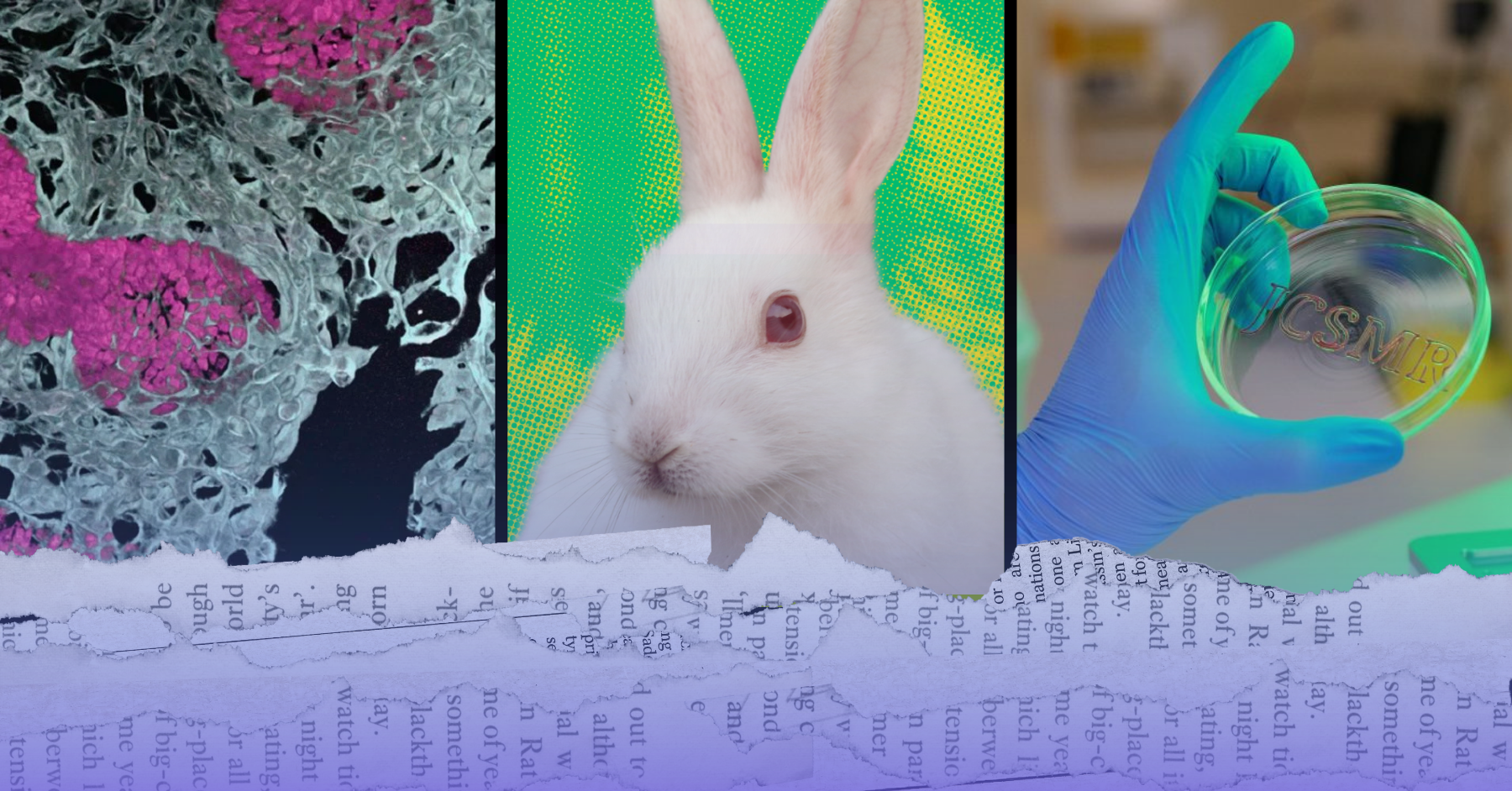
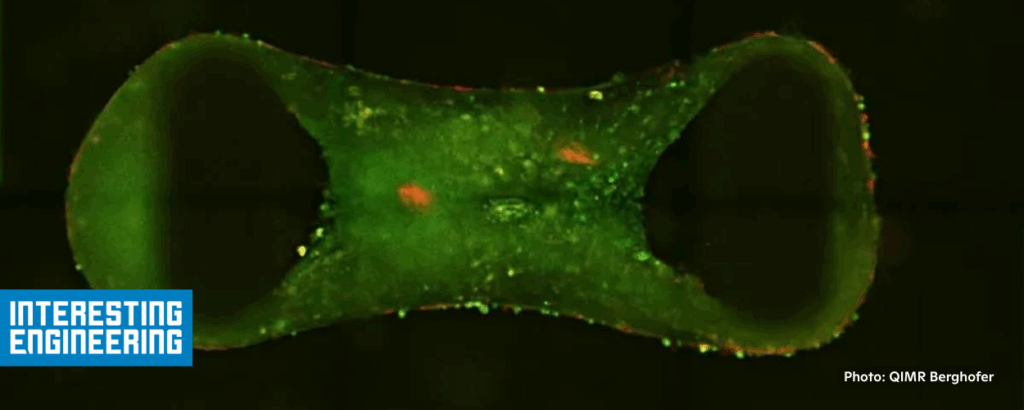 Chia seed-sized lab-grown hearts mimic real tissue to decode cardiac disease in children
Chia seed-sized lab-grown hearts mimic real tissue to decode cardiac disease in children
Neetika Walter, Interesting Engineering, 7/2/2025
“Tiny lab-grown hearts are helping scientists crack the code of childhood heart disease and fast-track new treatments. Developed by scientists at QIMR Berghofer’s Cardiac Bioengineering Lab in Australia, these miniature, three-dimensional hearts — known as cardiac organoids — mimic the structure and function of real adult human heart muscle.”
“Grown from human pluripotent stem cells — versatile cells that can develop into any cell type in the body — these organoids overcome a long-standing scientific challenge” and “could also help reduce the need for animal testing and early-stage human trials by allowing researchers to screen potential drugs more efficiently in the lab, he added.” 📰 Full Story →
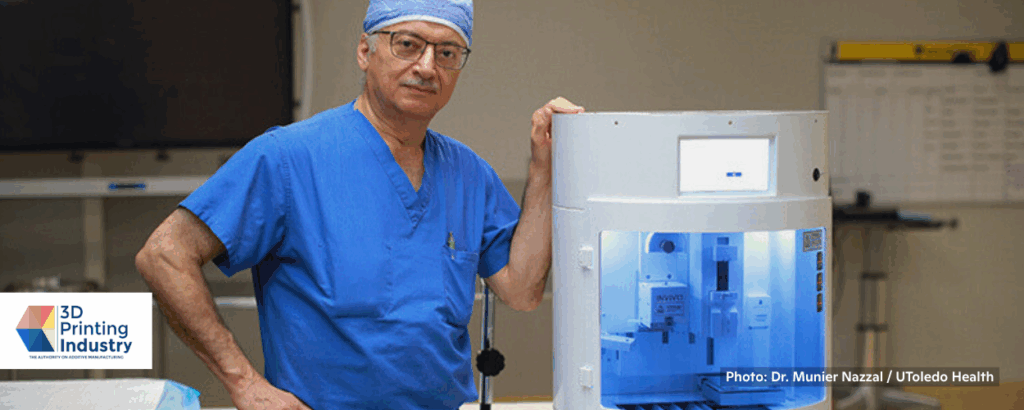 Chronic Wound Healed in 2 Weeks with AI and Unique 3D Printed Fat Graft
Chronic Wound Healed in 2 Weeks with AI and Unique 3D Printed Fat Graft
Ada Shaikhnag, 3D Printing Industry, 7/2/2025
“Unlike traditional skin grafts, the printed material is not a replacement for lost tissue. It does not close the wound through coverage alone. Instead, it creates an environment that encourages the body to repair itself. The printed graft sits in place, shielding the injury while stimulating the natural healing process from within.”
“Bioprinted skin has been drawing increasing attention as researchers investigate its potential uses in medicine. These lab-grown skin models offer a platform for studying various diseases, testing new therapies, and providing alternatives to animal testing in scientific research.” 📰 Full Story →
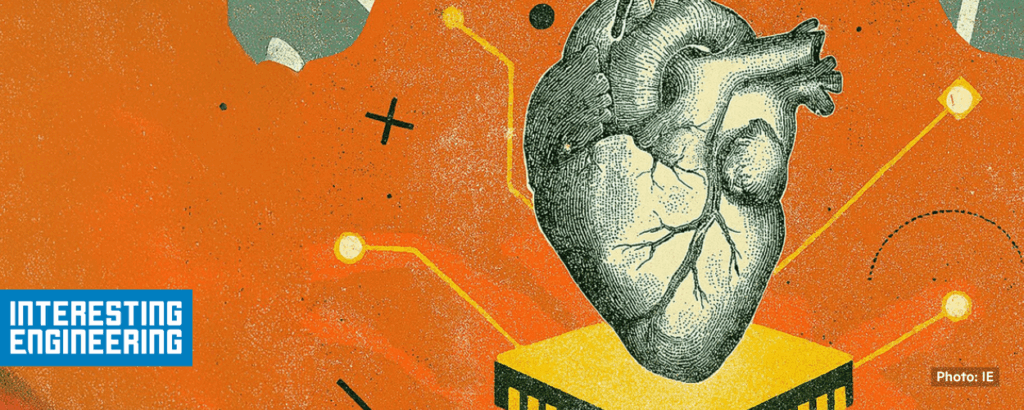 Organ-on-a-chip tech is (almost) ready to replace animal models
Organ-on-a-chip tech is (almost) ready to replace animal models
Georgina Jedikovska, Interesting Engineering, 7/3/2025
“ . . . organ-on-a-chip models are particularly effective at capturing key human biological differences that significantly influence drug response. ‘By using cells derived from individual donors, these systems can directly reflect variability in age, sex, and genetic background, thereby capturing key determinants of drug responses in humans,’….”
“OoC technology offers clear advantages over traditional animal models, notably stronger human relevance, quicker results, and reduced ethical concerns.” 📰 Full Story →
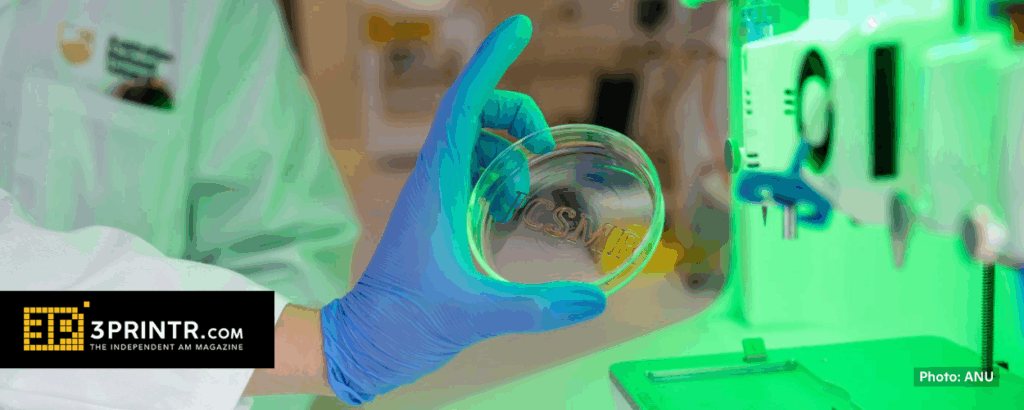 Bioprinting at ANU: 3D-Printed Cell Models as an Alternative to Animal Testing
Bioprinting at ANU: 3D-Printed Cell Models as an Alternative to Animal Testing
Lucia Gartner, 3Printr.com, 7/3/2025
“At the Australian National University (ANU), researchers are leveraging recent advances in bioprinting technology to create cell-based disease models in the lab. Central to this work are so-called bioinks—viscous printing materials containing living cells, which can be processed using modified 3D printers in a manner similar to traditional polymers.”
“‘Bioprinting is becoming an exciting technique to address really complex problems,’ says Professor Adam Perriman. ‘We’re harnessing the power of robotics and automation to answer questions that you couldn’t answer any other way.’”
“The technique enables the production of three-dimensional tissue structures that continue to develop and behave actively after printing. Current research focuses on replicating tumor tissue, with the goal of creating realistic cancer models that allow for more nuanced analysis of immunotherapies and drug candidates.”
“Bioprinting offers a scalable alternative that not only delivers more accurate results but also has the potential to significantly reduce the use of animal models.” 📰 Full Story →
 Alphabet’s Isomorphic Labs has grand ambitions to ‘solve all diseases’ with AI. Now, it’s gearing up for its first human trials
Alphabet’s Isomorphic Labs has grand ambitions to ‘solve all diseases’ with AI. Now, it’s gearing up for its first human trials
Beatrice Nolan, Fortune, 7/6/2025
“Alphabet’s secretive drug discovery arm, Isomorphic Labs, is getting ready to start testing its AI-designed drugs in humans, Colin Murdoch, Isomorphic Labs president and Google DeepMind’s chief business officer, told Fortune . . . After years in development, Murdoch says human clinical trials for Isomorphic’s AI-assisted drugs are finally in sight.”
“‘We’re trying to do all these things: speed them up, reduce the cost, but also really improve the chance that we can be successful,’ he says. He wants to harness AlphaFold’s technology to get to a point where researchers have 100% conviction that the drugs they are developing are going to work in human trials.”
“‘One day we hope to be able to say — well, here’s a disease, and then click a button and out pops the design for a drug to address that disease,’ Murdoch said. ‘All powered by these amazing AI tools.’” 📰 Full Story →
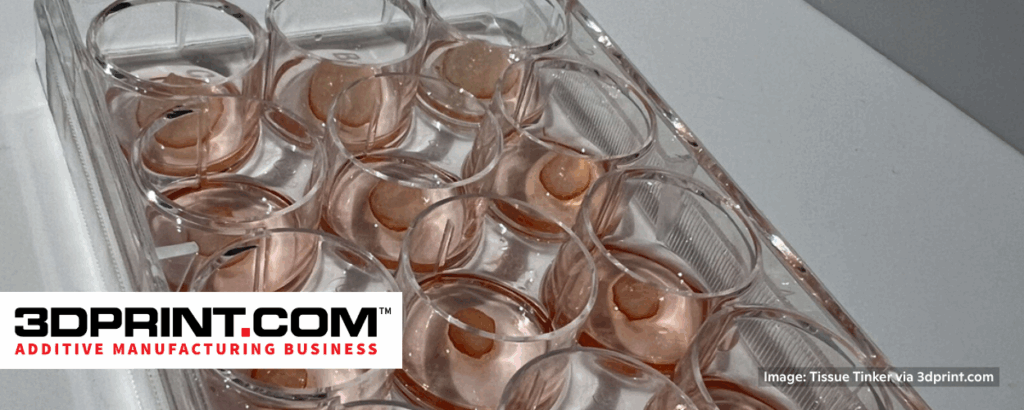 McGill University Startup TissueTinker Could Speed Up Cancer Drug Development with 3D Printing
McGill University Startup TissueTinker Could Speed Up Cancer Drug Development with 3D Printing
Joris Peels, 3DPrint.com, 7/7/2025
“TissueTinker is a McGill University startup that aims to accelerate cancer research. The team uses 3D printing to make tumor models from hydrogels. That approach may lead to alternatives for animal testing, which of course would alleviate a lot of suffering by animals. But at the same time, it could also make cancer research quicker and less expensive. The tumor models could also be more accurate, leading to faster adoption of new cancer drugs or better paths to cancer drugs.”
“Current animal-based testing and simplistic models of human organs and tumors are simply not effective in cost-effectively producing cancer medicines. Costly and unwieldy, the old approaches are simply not cutting it. Worse still, perfectly good cancer medicines could be getting binned unnecessarily through the use of poor models. TissueTinker is able to make more accurate models, creating ‘complex, miniaturized models that replicate healthy and diseased tissues side by side.’” 📰 Full Story →
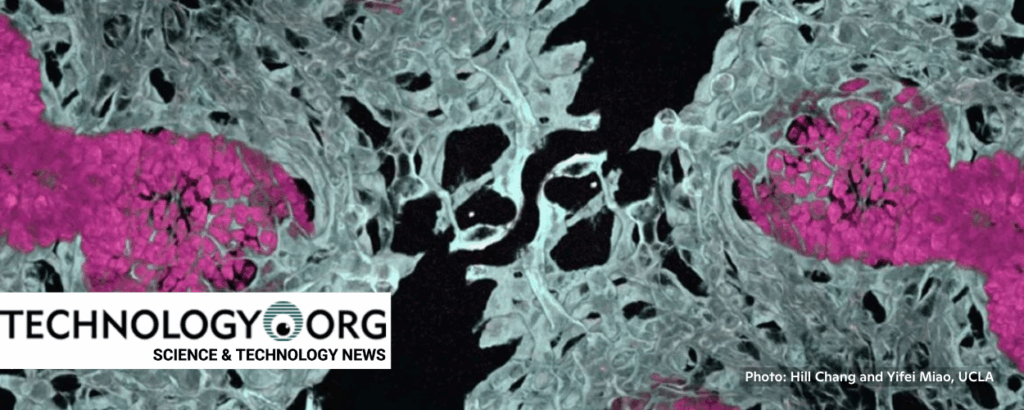 Scientists create first mini-lungs with built-in blood vessels, unlocking new insights for pulmonary vascular disease
Scientists create first mini-lungs with built-in blood vessels, unlocking new insights for pulmonary vascular disease
Technology.org, 7/19/2025
“The groundbreaking work . . . marks the first time scientists have created lung organoids with integrated vascular systems that closely mirror how lungs develop in the human body. The advance opens the door to potentially growing other vascularized organ models, including intestines and colons, providing unprecedented tools for studying diseases, testing drugs and developing personalized treatments.”
“The research team, which includes experts from Cincinnati Children’s Hospital Medical Center, has already put the advanced organoid model to work, using it to uncover new insights into a rare and deadly congenital lung disorder that affects newborns.” 📰 Full Story →
 ICC Debuts Best Practice Guidance Series Focus on Skin Sensitization Without Animal Testing
ICC Debuts Best Practice Guidance Series Focus on Skin Sensitization Without Animal Testing
BusinessWire, 7/22/2025
“The International Collaboration on Cosmetics Safety (ICCS) announces its first-ever Best Practice Guidance (BPG): ‘Skin Sensitization Assessment: Using New Approach Methods for Substances in Cosmetics and Personal Care Products.’ This document marks the inaugural publication in a new series of ICCS Best Practice Guidance documents, developed to support the global transition to animal-free safety science.”
“Grounded in Next Generation Risk Assessment (NGRA) principles, the BPG offers a structured, science-based workflow that includes practical steps from problem formulation, exposure assessment, data evaluation, to transparent decision-making. It is especially suited for safety assessors experienced in traditional methods but new to using NAMs.” 📰 Full Story →
 SGS Supports Non-Animal Clinical Testing with Release of 3D Skin Model White Paper
SGS Supports Non-Animal Clinical Testing with Release of 3D Skin Model White Paper
Hugh Taylor, Journal of Cyber Policy, 7/23/2025
“SGS, the world’s leading testing, inspection and certification company, has announced the release of a new white paper, ‘3D reconstructed skin models: transforming clinical and safety testing’.”
“Targeted at researchers, toxicologists and formulation scientists in the clinical and dermatological fields, the white paper provides essential insights into how advanced in vitro skin and mucosal tissue systems are reshaping research and development practices. As demand grows for ethical, human-relevant alternatives to animal testing, reconstructed human epidermis (RHE) and reconstructed mucosal epithelium models are emerging as essential tools for safety assessment, product development and regulatory compliance. These biologically advanced systems closely mimic human tissue, supporting validated, reproducible testing across irritation, absorption and disease modeling studies.” 📰 Full Story →
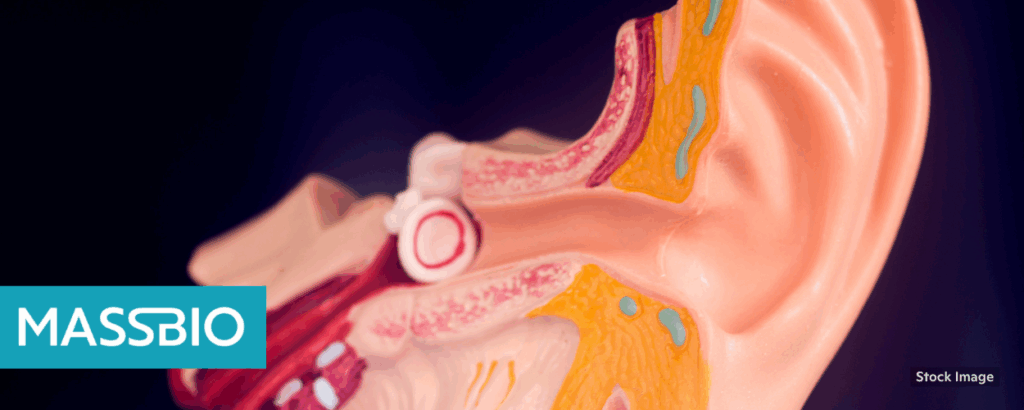 Cilcare launches a groundbreaking 3D Bioprinting Project with human cells to advance therapies for hearing disorders
Cilcare launches a groundbreaking 3D Bioprinting Project with human cells to advance therapies for hearing disorders
CILcare, MASSBIO, 7/25/2025
Cilcare’s “INEAR3D project . . . represents a bold leap forward in the development of human-based in vitro models for auditory drug screening.”
“Hearing loss is the most common sensory disorder in humans and a major public health issue worldwide. Yet, the effectiveness of auditory treatments remains limited, particularly due to challenges in drug delivery to the inner ear. The round window membrane (RWM) acts as a critical biological barrier between the middle and inner ear, limiting the diffusion and bioavailability of active pharmaceutical compounds. INEAR3D proposes to reconstruct the round window membrane using advanced 3D bioprinting technologies, specifically stereolithography DLP (Digital Light Processing).”
“The goal is not only to accelerate drug development but also to reduce animal testing….” 📰 Full Story →
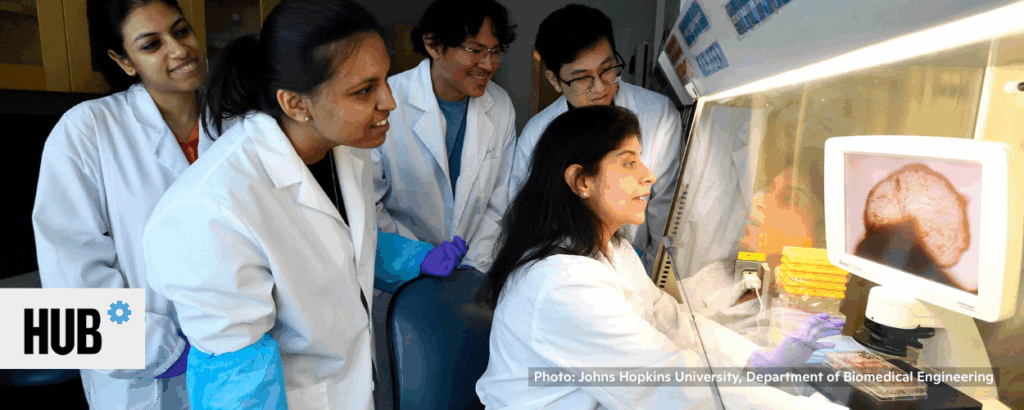 Johns Hopkins Scientists Grow Novel ‘Whole-Brain’ Organoid
Johns Hopkins Scientists Grow Novel ‘Whole-Brain’ Organoid
Hannah Robbins, Johns Hopkins University HUB, 7/25/2025
“Johns Hopkins University researchers have grown a novel whole-brain organoid, complete with neural tissues and rudimentary blood vessels — an advance that could usher in a new era of research into neuropsychiatric disorders such as autism.”
“’Most brain organoids that you see in papers are one brain region, like the cortex or the hindbrain or midbrain. We’ve grown a rudimentary whole-brain organoid; we call it the multi-region brain organoid (MRBO).’”
“We need to study models with human cells if you want to understand neurodevelopmental disorders or neuropsychiatric disorders….’” 📰 Full Story →
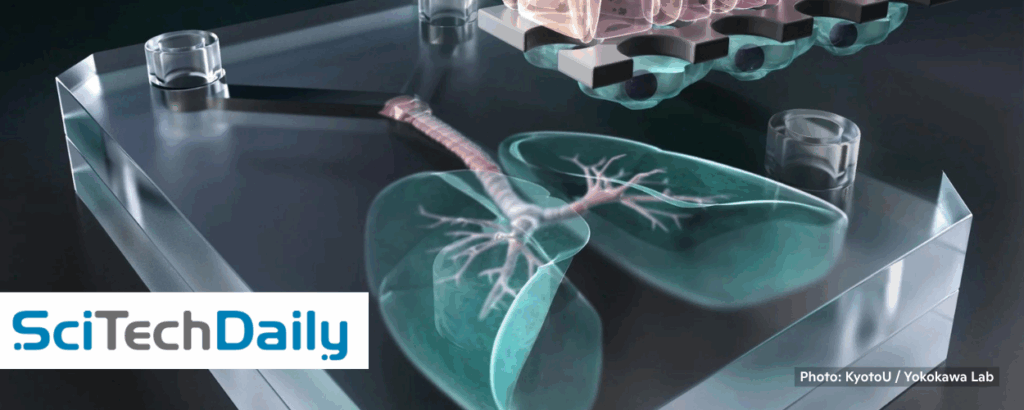 Scientists Develop “Lung-on-a-Chip” That Could Help Stop the Next Pandemic
Scientists Develop “Lung-on-a-Chip” That Could Help Stop the Next Pandemic
Kyoto University, SciTechDaily, 7/27/2025
“Respiratory illnesses like COVID-19 have triggered multiple global pandemics and continue to strain healthcare systems worldwide . . . Because each lung region reacts differently to infection, studying these effects accurately has been difficult. Traditional methods, including animal testing and basic lab-grown cell systems, often fall short of capturing the complexity of human lung responses.”
“To address this challenge, scientists at Kyoto University have created a micro physiological system (MPS) that closely mimics various regions of the human lungs. Their advanced device is designed to replicate both the airway and alveolar structures, allowing for in-depth study of how respiratory viruses affect each part. By combining this system with isogenic induced pluripotent stem cells (iPSCs), the researchers are paving the way for more precise, individualized treatment strategies for lung diseases.” 📰 Full Story →
 How AI And Mini-Organs Could Replace Testing Drugs on Animals
How AI And Mini-Organs Could Replace Testing Drugs on Animals
Alex Knapp, Forbes, 7/31/2025
“Animal testing, a first step in the process for many drugs, is a key factor here. It simply isn’t as accurate as it needs to be, leading researchers down a multitude of costly rabbit holes and dead ends. A common joke among them is that we’re capable of curing nearly every disease–in mice. ‘Clearly we’re not getting realistic information from animals, because everything that gets to the clinical trial stage has first gone through animal trials and succeeded, right?’”
“‘The core clinical challenge that literally every biotech faces is that animals are not human, and organoids are not either, and cells are not,’ Gordian CEO Francisco LePort told Forbes. ‘You can’t know what’s going to work in a human until you really try it in a human.’ More robust organoids could help” and “[s]cientists are also looking to artificial intelligence to help model the ways drugs interact with the body.” 📰 Full Story →
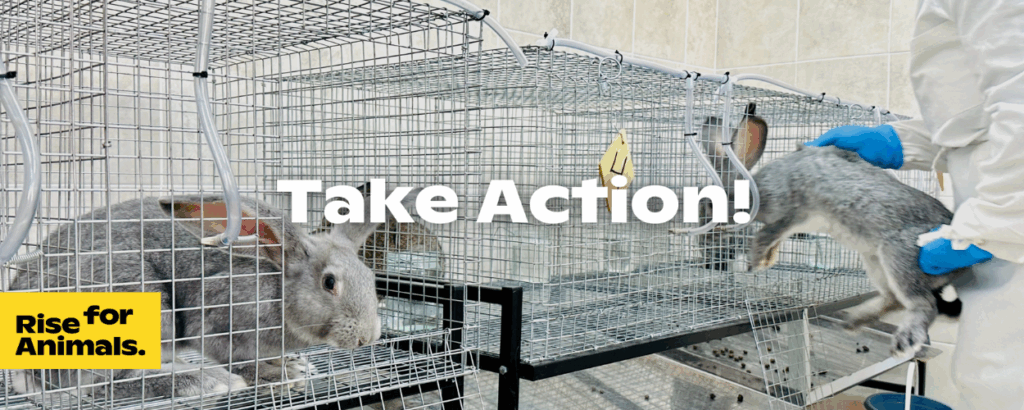 Take Action: End Animal Testing for Beauty. Support the Humane Cosmetics Act.
Take Action: End Animal Testing for Beauty. Support the Humane Cosmetics Act.
Animal testing for cosmetics is outdated and unethical, yet it’s still happening right here in the United States.
The Humane Cosmetics Act of 2025 (H.R. 1657) aims to prohibit animal testing for cosmetics and also ban the sale of animal-tested cosmetics in the U.S. This legislation would bring us in line with over 40 countries — including the entire European Union, the United Kingdom, Canada, Australia, India, South Korea, Mexico, and more — that have already enacted similar legislation.
Tell your Members of Congress: Beauty should never hurt. Take 30 seconds to send your letter now. ⚠️ Take Action Now →
Share this news compilation on X or Bluesky.
Or share this link on Facebook or anywhere else:
riseforanimals.org/news/sci-news-july-2025